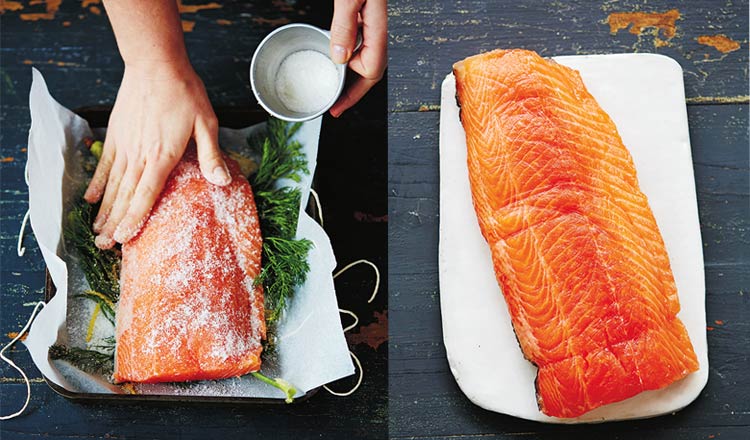Documented through a stunning series of photographs she shows how easy and fun the process can be! Enjoy!
“The first time I ever caught a fish was also the first time I made gravlax. Beginner’s luck saw me snag an 11 pound Chinook salmon off the coast of Oregon, and to this day I frequently feel the urge to brag about it. Needless to say, I’ve never caught another fish, and not from lack of trying. When you have a fish that big to deal with, it is a good time to think about different preservation techniques. We had sashimi and some oven-roasted salmon that night, made gravlax to have in a few days time, and then cured the roe so we had beautiful pink caviar whenever we wanted it. Gravlax is the Nordic name for salt-cured fish. The method suits salmon, but you can also use ocean trout or other oily, firm fish. This is a really impressive dish and absolutely dead easy. Preparing the salmon only takes a few minutes, but you need to leave it for a few days to cure, so start this project two days in advance.” Kate Walsh, Author
Makes 800 g (1 lb 12 oz)
INGREDIENTS
2 tablespoons sea salt
140 g (5 oz/²⁄³ cup) granulated white sugar
2 bunches dill
zest of 1 lemon
800 g (1 lb 12 oz) very fresh salmon fillet, 4 cm (1½ inches) thick, with the skin on, and all the small bones removed
Equipment
small bowl
kitchen string
baking dish with sides
baking paper
weights, such as tins of tomatoes or small beer bottles
chopping board
very sharp knife
METHOD
1 Assemble the cure and dish: Combine the salt and sugar in a small bowl. Lay three long bits of kitchen string over a baking dish, across the two long sides of the dish, spaced evenly apart. Drape a large piece of baking paper over the dish, making sure there is a generous overhang. Spread half the dill over the paper, then sprinkle with half the sugar and salt mixture, then half the lemon zest.
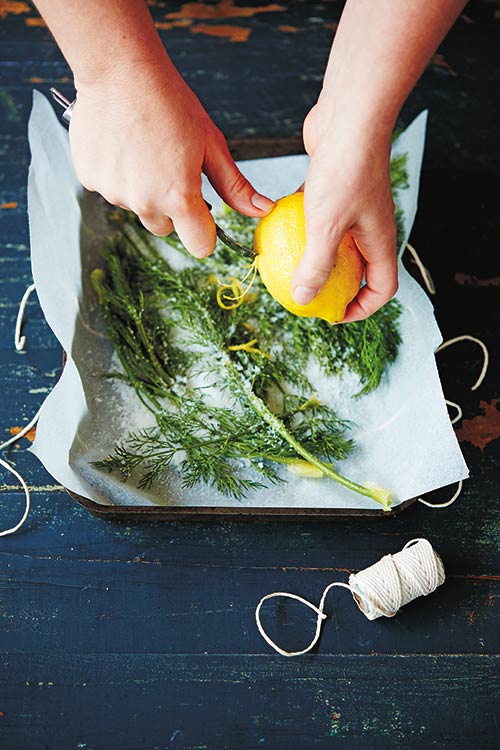
2 Coat the fish: Sit the salmon on top, skin side down. Evenly sprinkle the rest of the sugar and salt mixture over the salmon, then top with the remaining dill and lemon zest. The fish should be well covered.
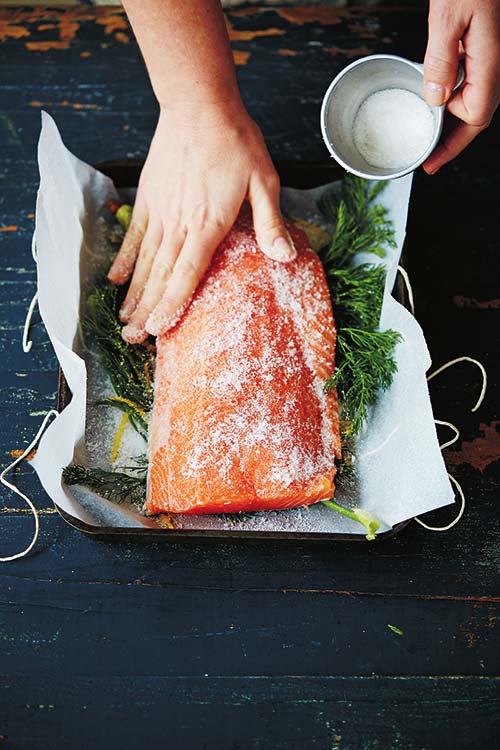
3 Wrap it tightly: Pull the edges of the baking paper over the fish and wrap it up like a present, tying with the strings.
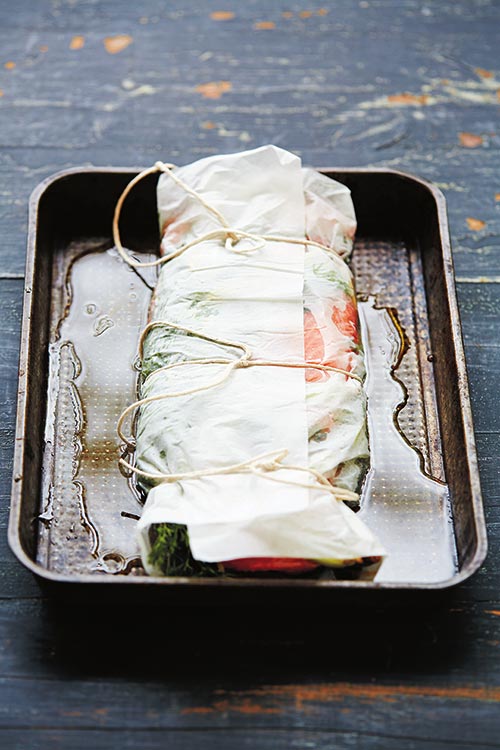
4 Weigh it down: Grab two tins of tomatoes or small bottles of beer and place on top of the salmon. Weighing the fish down is not absolutely necessary, but will give a firmer gravlax that will be easier to slice.
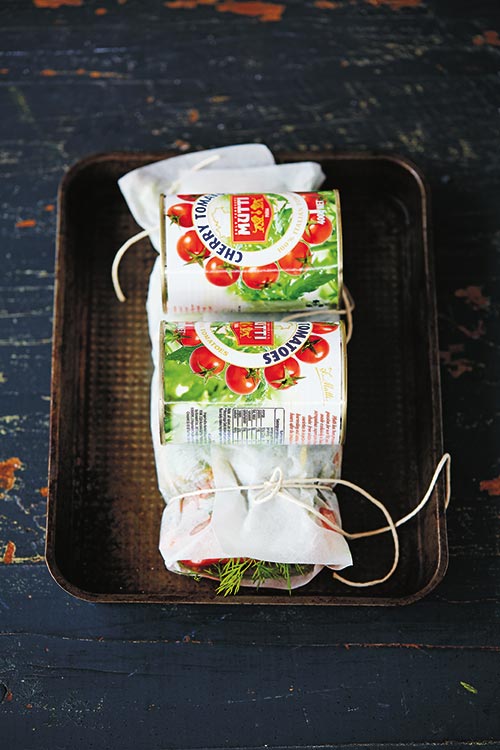
5 Cure in the fridge: Place in the fridge for 24 hours, turning once after 12 hours, and emptying the liquid that collects in the bottom of the dish. Remove after 24–48 hours: When the fish feels firm to touch, take it out of the fridge. This recipe is not an exact science – the fish is safe to eat at any stage, so just remove when you think it is firm enough for you. This could be anywhere between 24 and 48 hours.
6 Get it ready to slice: Unwrap the fish. Remove the dill and lemon zest strips, then scrape off the curing mix. You can wash the salmon if you like, but it isn’t necessary.
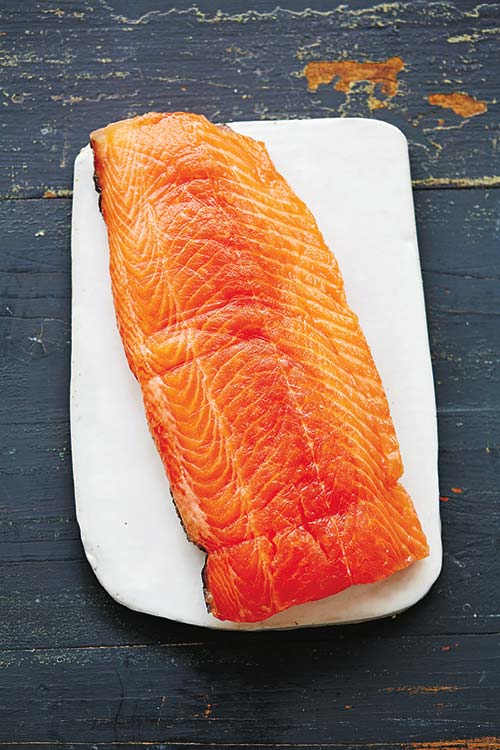
7 Slice and serve: Place the fish on a chopping board. Using a very sharp knife, slice it very thinly on the diagonal; the skin will help keep it in place as you slice. (If you’re finding it hard to get thin slices, wrap the fish in foil and freeze for 10 minutes to firm up.) Once it has cured, the gravlax will keep for up to 3 days in the fridge.
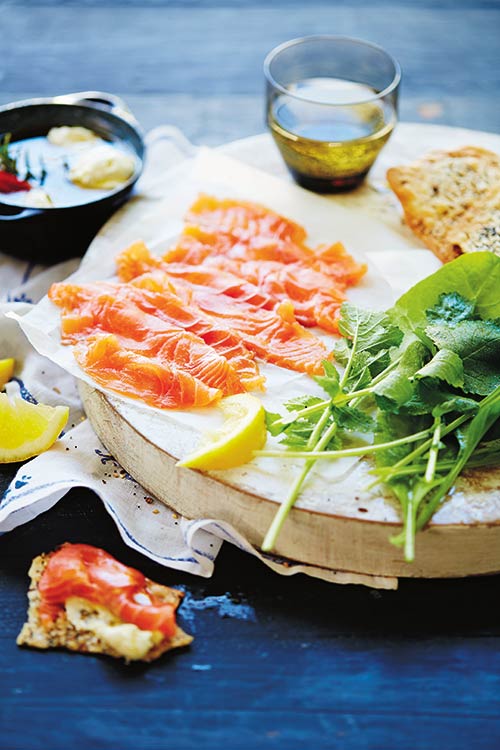
How to eat Gravlax
1 Load up a bagel with gravlax, Labne or cream cheese, and a sprinkling of capers and dill.
2 Grab some white bread, butter it liberally, and layer with gravlax. Remove the crusts and serve next to your cucumber sandwiches at high tea.
3 Throw into an Asian-style salad full of fresh Thai basil, mint, coriander (cilantro), Vietnamese mint and a sprinkling of roasted peanuts.
 Recipes and Images from Real Food Projects by Kate Walsh, published by Murdoch Books photographer Cath Muscat
Recipes and Images from Real Food Projects by Kate Walsh, published by Murdoch Books photographer Cath Muscat

